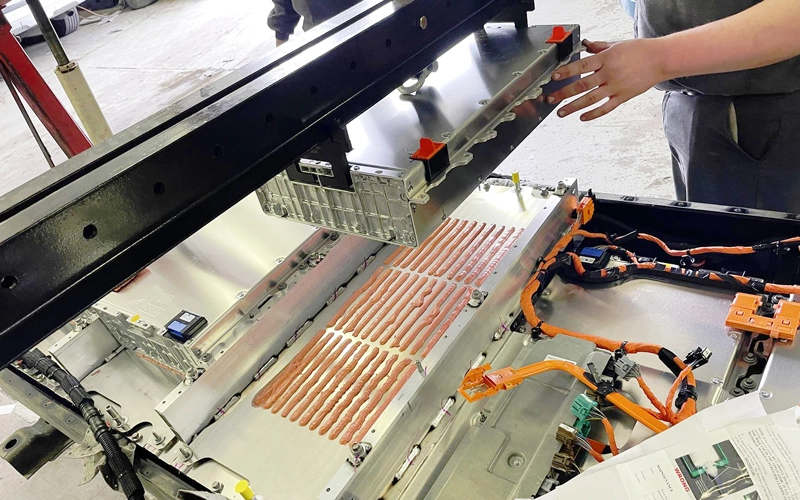Enhancing Industrial EV Battery Performance with Thermal Conductivity Gel
- Posted on:2025-03-18 10:05:00
- Source:AOK Thermal Pad Manufacturer Industry News
Thermal conductivity gel plays a pivotal role in boosting the performance of industrial electric vehicle (EV) batteries by addressing one of their biggest challenges: Heat management. EV batteries generate significant heat during operation, and without proper control, this heat can degrade performance, shorten lifespan, and even pose safety risks.
What Is Thermal Conductivity Gel?
Thermal conductivity gel is a specialized material used in battery thermal management systems (BTMS) to improve heat dissipation. Typically composed of composites—such as silica gel plates or thermally-conductive adhesives—it’s engineered to have high thermal conductivity. This property allows it to efficiently transfer heat away from battery cells to a cooling system, functioning as an efficient thermal pathway that maintains the battery within its ideal temperature range.
Why Thermal Management Matters?
Before diving into the specifics of Thermal conductivity gel, it’s essential to understand why thermal management is critical for EV batteries. During charging and discharging—especially under high-demand conditions like fast charging or heavy industrial use—batteries produce heat. If this heat builds up unchecked, it can:
- Reduce efficiency by slowing chemical reactions inside the battery.
- Accelerate wear, shortening the battery’s lifespan.
- Increase the risk of thermal runaway, a dangerous overheating scenario that could lead to fires or explosions.
Effective thermal management is therefore indispensable for maximizing industrial EV battery performance.
How Thermal Conductivity Gel Enhances Performance?
Thermal conductivity gel elevates EV battery performance through three key mechanisms:
- Improved Heat Dissipation
- Enhanced Temperature Uniformity
- Increased Safety
By rapidly transferring heat from battery cells to the cooling system, the gel prevents overheating. This capability is particularly crucial during intensive operations, ensuring sustained efficiency under stress.
Uneven temperatures across a battery module can create localized hot spots, leading to performance inconsistencies and accelerated degradation. The gel ensures even heat distribution, minimizing these risks and extending service life through uniform wear patterns.
By maintaining stable temperatures, Thermal conductivity gel significantly reduces the likelihood of thermal runaway. This enhancement makes industrial EVs both safer and more reliable—a critical advantage for large-scale applications.
Part of a Holistic Solution
While Thermal conductivity gel is highly effective, it often works synergistically with other thermal management components, such as liquid cooling systems or phase-change materials. Together, these technologies form a robust BTMS tailored to industrial requirements.
Case Study: AOK TF Series Thermally-Conductive Gap Fillers
This advanced adhesive not only optimizes heat dissipation but also reinforces the structural integrity of battery packs, enhancing durability in demanding industrial environments.
The Broader Impact
As sustainability initiatives accelerate EV adoption, optimizing battery performance has become paramount—especially for industrial applications where reliability is non-negotiable. Thermal conductivity gel stands at the forefront of this transformation, enabling batteries to operate cooler, last longer, and meet stringent safety standards. It’s an unsung hero driving the EV revolution.
In Summary
Thermal conductivity gel represents a critical innovation for industrial EV batteries. By enhancing heat dissipation, ensuring thermal uniformity, and mitigating safety risks, it elevates both performance and longevity. Whether through silica gel composites or next-gen adhesives, this material is proving indispensable in making electric vehicles more efficient and dependable for industrial challenges.
If you would like to learn more about AOK performance thermal materials, please visit our website at www.aok-technologies.com


